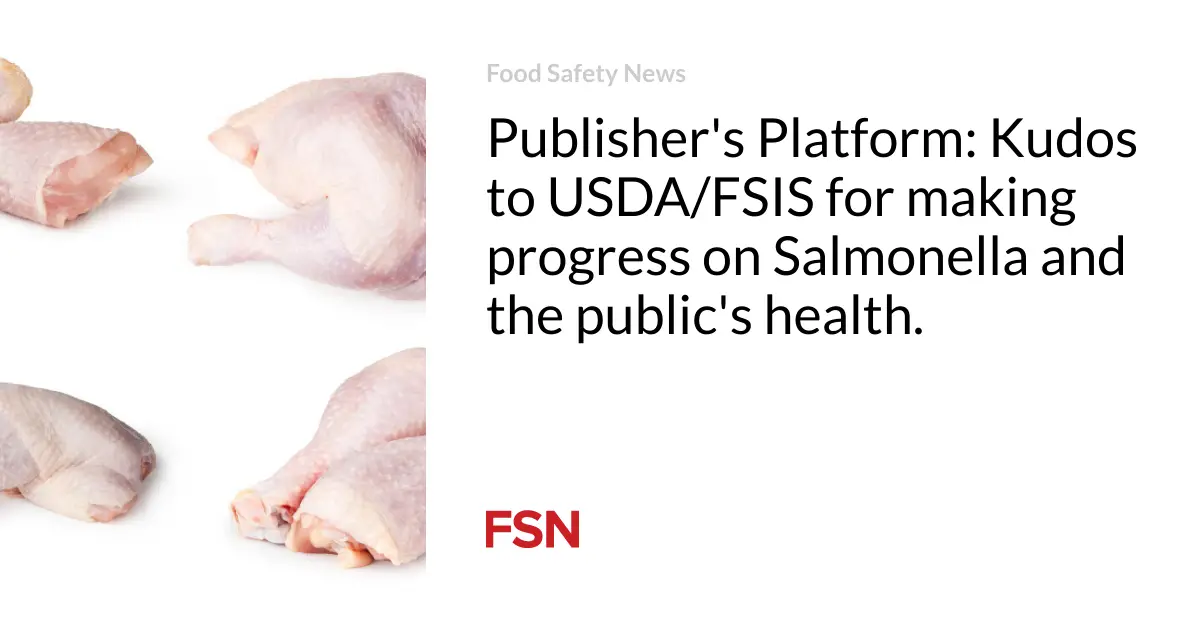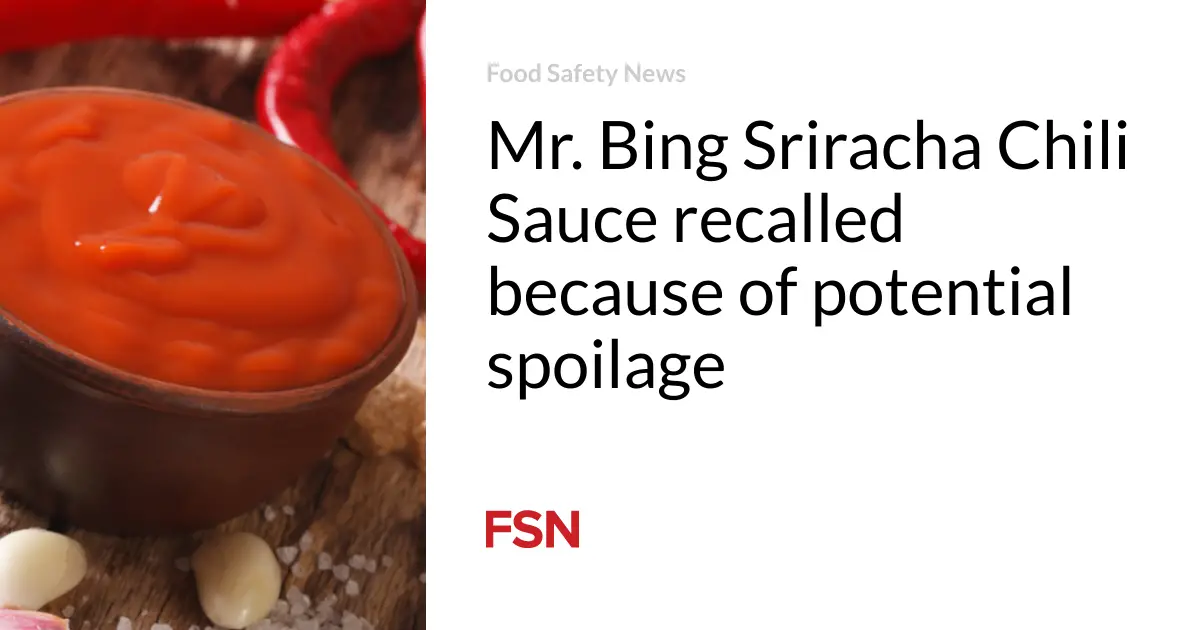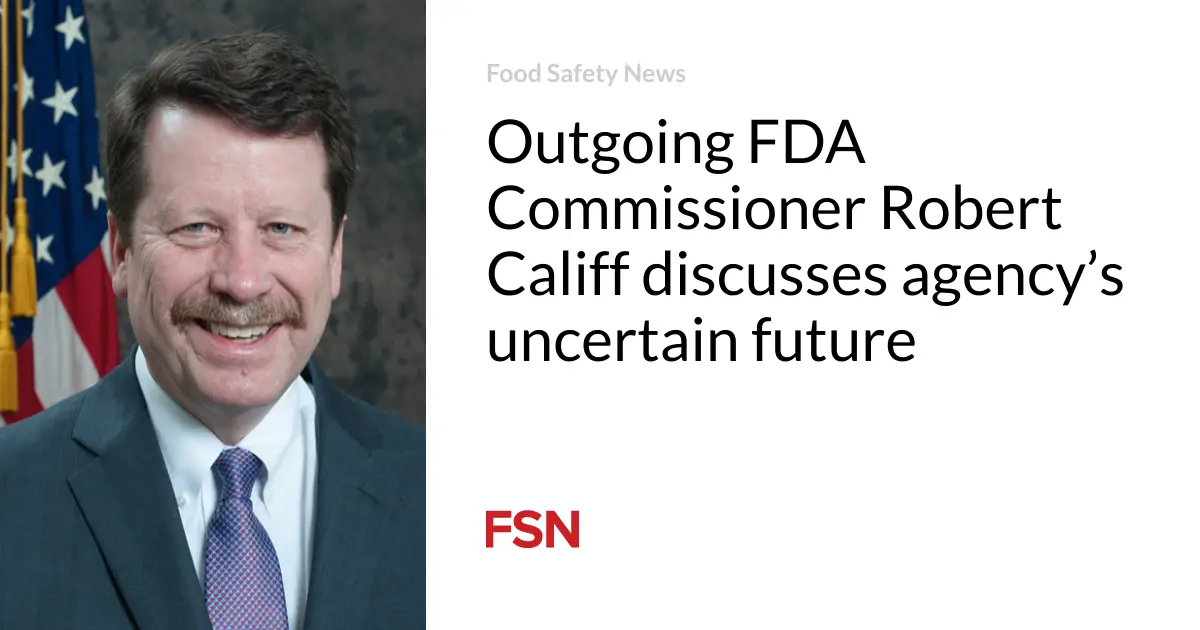
[ad_1]
Sure, I would like to ban all Salmonella from chicken, but I learned long ago that you never make progress by making “perfect the enemy of the good.” Making the three Salmonellas that are know to cause human illnesses adulterants and limiting them in poultry is a good step for public health and in the long run a good step for the poultry industry. The proposed Salmonella serotypes of public health significance identified for raw chicken carcasses, chicken parts, and comminuted chicken are Enteritidis, Typhimurium, and I 4,[5],12:i:-, and for raw comminuted turkey are Hadar, Typhimurium, and Muenchen. These are the most highly virulent Salmonella serotypes associated with these products identified in the FSIS chicken and turkey risk assessments.



Kudos to Tom Vilsack, Jose Emilio Estaban, Sandra Eskin and all the great scientists and others at USDA/FSIS that worked on this. Not perfect in my mind, but awfully damn good! Here is the full executive summary – worth the read:
FSIS is responsible for verifying that the nation’s commercial supply of meat, poultry, and egg products is safe, wholesome, and properly labeled. In support of this mission, FSIS established a Salmonella verification testing program in 1996 as part of the ‘‘Pathogen Reduction; Hazard Analysis and Critical Control Point Systems’’ (PR/HACCP) final rule (61 FR 38805). Among other things, the PR/HACCP final rule established Salmonella pathogen reduction performance standards for raw product to allow FSIS to verify whether establishments have effective process controls to address Salmonella. The current performance standards for young chicken and turkey carcasses, raw chicken parts, and comminuted chicken and turkey products are represented as a fraction of the maximum number of allowable Salmonella-positive results over a targeted number of samples collected and analyzed in a 52-week moving window. FSIS categorizes establishments based on the Salmonella verification sampling results and posts the performance categorization of all establishments subject to the performance standards on the FSIS website. FSIS uses Salmonella performance standard categorization as a basis to prioritize in-depth evaluations of failing establishments’ food safety systems, including their HACCP plan and sanitation Standard Operating Procedures (SOPs).
While the results of FSIS’ Salmonella verification sampling show that the current prevalence-based performance standards approach has been effective in reducing the proportion of poultry products contaminated with Salmonella, these measures have yet to have an observable impact on human illness rates. The estimated rate of human Salmonella infections from all sources has remained consistent over the last two decades, with over 1.3 million illnesses estimated in the United States each year. Additionally, while current Salmonella performance standards are designed to achieve the Department of Health and Human Services’ Healthy People Initiative[1] targets for foodborne illness reduction, the 2010 and 2020 Healthy People targets for a reduction in Salmonella infections from all sources were not met. The Healthy People 2030 target is to reduce Salmonella infections from all sources to a national case rate of no more than 11.5 per 100,000 consumers per year. To reach this 2030 target, Salmonella illnesses must be reduced by 25 percent.
Poultry is among the leading sources of Salmonella foodborne illness acquired domestically in the United States.[2] Therefore, on October 19, 2021, FSIS announced that it was mobilizing a stronger, and more comprehensive effort to reduce Salmonella illnesses associated with poultry products. In the announcement, FSIS stated that it had initiated several activities designed to gather data and information to inform and support future actions related to this new effort. FSIS charged the National Committee on Microbiological Criteria for Food (NACMCF) to provide guidance on the types of microbiological criteria the Agency might use to better prevent Salmonella infections associated with poultry products. The Agency also conducted a risk profile for pathogenic Salmonella subtypes in poultry and developed two quantitative risk assessments —one for Salmonella in chicken and one for Salmonella in turkey. Additionally, FSIS conducted an exploratory sampling program for young chicken carcasses to generate microbial data to help inform future policies and added quantification to its Salmonella testing program.
In addition to initiating these activities, on October 17, 2022, FSIS shared with stakeholders a draft regulatory framework that the Agency was considering for a new strategy to control Salmonella in poultry products and announced that FSIS would be hosting a virtual public meeting on November 3, 2022, to discuss the framework. The three components under consideration in the draft framework included:
Component One. Requiring that establishments characterize Salmonella as a hazard reasonably likely to occur at receiving and requiring that incoming flocks be tested for Salmonella before entering an establishment.
Component Two. Enhancing establishment process control monitoring and FSIS verification.
Component Three. Implementing an enforceable final product standard that would define whether certain raw poultry products contaminated with certain levels and/or serotypes of Salmonella are adulterated.
The draft framework under consideration also addressed cross-cutting issues associated with testing for Salmonella, considerations for small and very small establishments, and data sharing. At the November 2022 public meeting, stakeholders presented oral comments on the three separate components of the draft framework and the cross-cutting issues. Stakeholders also had an opportunity to submit written comments to FSIS by December 16, 2022.
After carefully evaluating the written comments and other stakeholder input provided on the October 2022 draft framework, along with new studies and information that have become available since the Agency made the October 2022 draft framework available to the public, FSIS is proposing a new regulatory framework targeted at reducing Salmonellaillnesses associated with poultry products. The proposed regulatory framework reflects the draft framework with some modifications.
First, consistent with Component Three of the October 2022 draft framework, FSIS is proposing final product standards that would define whether certain raw poultry products contaminated with certain Salmonella levels and serotypes are adulterated as defined in the Poultry Products Inspection Act (PPIA) (21 U.S.C. 451 et seq.). Specifically, FSIS has tentatively determined that raw chicken carcasses, chicken parts, comminuted chicken, and comminuted turkey are adulterated if they contain any type of Salmonella at or above 10 colony forming units/per milliliter or gram (10 cfu/mL(g)) in analytical portion (i.e., mL of rinsate or gram of product) and contain any detectable level of at least one of the Salmonella serotypes of public health significance identified for that commodity. The proposed Salmonella serotypes of public health significance identified for raw chicken carcasses, chicken parts, and comminuted chicken are Enteritidis, Typhimurium, and I 4,[5],12:i:-, and for raw comminuted turkey are Hadar, Typhimurium, and Muenchen. These are the most highly virulent Salmonella serotypes associated with these products identified in the FSIS chicken and turkey risk assessments.
The Salmonella serotypes of public health significance will likely change over time as the serotypes commonly associated with human illnesses change. FSIS would continue to track annual targets for reducing the proportion of poultry samples that contain Salmonella serotypes of public health significance as well as data on rates for additional serotypes commonly associated with human illness to inform future revisions to the Salmonella serotypes of public health significance. Should FSIS finalize the proposed final product standards, the Agency intends to further evaluate and, if necessary, refine these standards as advances in science and technology related to pathogen levels, serotypes, and virulence genes become available. If FSIS finalizes the proposed final product standards, the Agency intends to re-evaluate the serotypes of public health concern every 3-5 years at a minimum and whenever new information on Salmonella serotypes associated with human illness become available. When evaluating the serotypes, FSIS would consider, among other things, outbreak illness data, foodborne illness surveillance data, product testing data, and animal testing data. FSIS would publicly announce any modifications to the final products standards in the Federal Register. FSIS requests comments on this proposed timeline for re-evaluating serotypes of public health concern.
Should FSIS finalize these proposed standards, the Agency intends to conduct a routine sampling and verification testing program for Salmonella in chicken carcasses, chicken parts, comminuted chicken, and comminuted turkey in which the Agency would collect samples of raw final products and analyze them for Salmonella levels and serotypes to determine whether the final product is adulterated. Under the proposed Salmonella verification testing program, FSIS intends to only collect and analyze samples of the final raw poultry products produced by an establishment, i.e., chicken carcasses to be shipped in commerce as whole chickens, chicken parts to be shipped in commerce as chicken parts, comminuted chicken to be shipped in commerce as comminuted chicken products, and comminuted turkey to be shipped in commerce as comminuted turkey products. Under this proposed determination, chicken parts subject to the final product standards would include legs, thighs, breasts, wings, quarters, and halves.
When FSIS tests a product sample for adulterants, establishments must maintain control of products tested for adulterants to ensure that the products do not enter commerce while waiting for receipt of the test results. Thus, if FSIS finalizes its proposed routine Salmonella verification testing program for chicken carcasses, chicken parts, comminuted chicken, and comminuted turkey, establishments that produce these raw products would need to control and maintain the integrity of the sampled lot pending the availability of test results. If test results detect Salmonella at a level of 10 cfu/mL(g) or higher and at least one Salmonella serotype of public health significance, FSIS would consider products represented by the sampled lots to be adulterated and would issue a non-compliance record (NR). Therefore, all products in the lot represented by the sample would be prohibited from entering commerce. If any product from the lot represented by the product samples has entered and remains available in commerce, FSIS would request that the producing establishment recall the implicated products. Depending on the circumstances, in addition to issuing an NR, FSIS could take other appropriate enforcement action as authorized in 9 CFR part 500 because the establishment would have produced and shipped adulterated product. Such actions may include immediately suspending inspection or issuing aNotice of Intended Enforcement (NOIE).
As FSIS implements the final product standards verification sampling program, the Agency has tentatively decided to phase out all current Salmonella performance standards for poultry. Thus, when the proposed final product verification sampling program is fully implemented, FSIS has tentatively decided that it would no longer use Salmonellasampling results to categorize establishments that produce poultry products and would no longer publish these establishments’ performance standards categories on the FSIS website. The Agency is requesting comments on this issue.
Consistent with Component Two of the initial proposed framework, FSIS is proposing to revise the regulations in 9 CFR 381.65(g) and (h) that require that all poultry slaughter establishments develop, implement, and maintain written procedures to prevent contamination by enteric pathogens throughout the entire slaughter and dressing operation and maintain records documenting those procedures. FSIS is proposing to amend these regulations to establish new requirements pertaining to how establishments monitor and document whether their processes for preventing microbial contamination are in control. The proposed revisions are intended to clarify existing regulatory requirements related to process control monitoring in 9 CFR 381.65(g) and (h).
Under this proposal, establishments would be required to incorporate statistical process control (SPC) monitoring principles into their microbial monitoring programs (MMPs). The proposed revisions would require that establishments use only validated and fit for purpose microbial sampling and analysis procedures, generate and record statistically meaningful microbial monitoring data, set benchmarks by which to evaluate microbial monitoring data, and otherwise define the statistical methods the establishment will use to evaluate the recorded data against the predefined limits. To offset the costs associated with this proposal, eligible very small (VS) and very low volume (VLV) establishments would have access to laboratory services provided by FSIS at no charge to analyze the establishments’ microbial monitoring samples for them.
FSIS is further proposing to revise the regulations to ensure that establishments comply with the corrective action provisions required under HACCP as they apply to the establishment’s MMP. FSIS is proposing to specifically require establishments to, at a minimum, implement written corrective actions, including a root cause assessment, when microbial monitoring results deviate from the predefined criteria in the MMP, the other process control monitoring results, or the process control determination made for the entire HACCP system.
FSIS has developed new guidance to help establishments meet the proposed updated sampling and analysis requirements under 9 CFR 381.65(g). The new guidance includes a SPC sampling plan based on paired sampling for Aerobic Count (AC) at the rehang and post-chill locations, with a one-sided process control statistical model that charts and calculates against minimum monitoring criteria at the minimum required frequency. Establishments that incorporate the guidance into their MMPs would not be required to provide FSIS with additional scientific or technical information to support their chosen statistical methods. FSIS also is proposing to make available to all poultry slaughter establishments an electronic spreadsheet file that is pre-programmed to calculate the monitoring measures for the guidance sampling plan as results are entered.
In addition, FSIS is proposing to amend the recordkeeping requirements under 9 CFR 381.65(h) to require that establishments submit their microbial monitoring sampling results to FSIS electronically. FSIS is developing a web portal that will allow external partners to securely upload sampling information and submit it to FSIS electronically in a machine-readable format.[3] Should FSIS finalize this proposal, the Agency would provide a template that establishments could use to record and submit their monthly results. Establishments that use the template to record the microbial monitoring results may upload their completed template into the portal or they may enter the information manually into the portal. Establishments that do not use the template provided by FSIS to record their results would need to manually enter microbial sampling data into the portal to submit the monthly data.
Under Component One of the October 2022 draft framework, FSIS considered whether it should require poultry slaughter establishments to characterize Salmonella as a hazard reasonably likely to occur at receiving and require that incoming flocks be tested for Salmonella before entering an establishment. This approach would require the flock to meet a predetermined target level for Salmonella at receiving.
FSIS considered the available scientific research as well as input from the NACMCF and concluded that, at this time, the research does not support the use of a threshold for test results at the receiving step to reduce or eliminate Salmonella from raw poultry products. In addition, FSIS received several comments from small poultry processors and producers and trade associations representing the meat and poultry industries that expressed concerns that the measures under consideration in Component One would impose an overwhelming burden on small producers and processors. The comments also stated that requiring that establishments determine that Salmonella is a hazard reasonably likely to occur at receiving is inconsistent with HACCP principles. While FSIS has decided at this time not to establish a regulatory requirement that establishments characterize Salmonella as a hazard reasonably likely to occur at receiving or that incoming flocks be tested for Salmonella before entering an establishment, the Agency is focusing on a non-regulatory approach for reducing the Salmonella load on incoming birds. The Agency intends to provide updated guidance on pre-harvest interventions and practices for preventing or reducing Salmonella colonization of live birds. The Agency also will continue to explore and develop strategies for industry to address Salmonella contamination risk at receiving.
Costs and benefits of the proposed rule and proposed determination
FSIS estimates this proposal would have a net benefit of $4.1 million per year, ranging from $1.1 million to $6.7 million, assuming the proposed implementation schedule and annualizing over 10 years at a 7 percent discount rate, as discussed below (Table 1). This proposal is estimated to cost industry $16.4 million per year, ranging from $3.3 to $32.3 million. The main cost component in this proposal is the requirement that establishments subject to FSIS verification sampling for adulterants maintain control of sampled product pending test results. This cost is likely an overestimate as discussed below. Industry may also incur costs associated with HACCP plan reassessments and changes to process control requirements.
FSIS estimates this proposal would result in benefits to society of $20.5 million per year, ranging from $4.4 million to $39.0 million. The majority of the benefits are derived from prevented illnesses of $12.9 million per year, ranging from $0.3 to $28.7 million. FSIS also estimated avoided costs from a reduction in the risk of outbreak-related recalls for industry. Additional industry actions in response to this proposal may lead to additional benefits.
[1] Launched by the U.S. Department of Health and Human Services (HHS) in 1980, the Healthy People Initiative sets out to create widely accessible plans to help organizations, communities and individuals improve public health. Each decade, HHS releases new goals after evaluating the successes and areas of growth from the previous ten years. They monitor the progress toward Healthy People’s objectives using high-quality data and feedback., the HHS benchmark continues to focus on reducing poultry-based Salmonella infections by 25 percent, a goal that has not been reached over the last decade. The Healthy People 2030 objectives were released on August 18, 2020.
[2] Interagency Food Safety Analytics Collaboration (FSAC). Foodborne illness source attribution estimates for 2020 for Salmonella, Escherichia coli O157, and Listeria monocytogenes using multi-year outbreak surveillance data, United States. GA and D.C.: U.S. Department of Health and Human Services, Centers for Disease Control and Prevention, Food and Drug Administration, U.S. Department of Agriculture’s Food Safety and Inspection Service. 2022. Available at: https://www.cdc.gov/ifsac/php/annual-reports/?CDC_AAref_Val=https://www.cdc.gov/foodsafety/ifsac/annual-reports.html.
[3] In a format that provides a digital representation of data or information that can be imported and read into a computer system for further processing.
[ad_2]
Source link





